The problem
- Have you ever used an electric scooter or bicycle to commute to work? Have you ever stumbled upon a broken tile? Have you had to change your route because of a tree in the middle of the sidewalk?
- Have you ever stopped to think about how all these daily factors affect someone with mobility issues?
- This is what my team and I have set out to understand and address: the limited awareness of social barriers and even a lack of understanding towards people with mobility issues.

For more details on this work, everything is documented in this link.
Research & Analysis
First of all, after studying the brief and individually researching, we formulated ‘Research Questions’ through the collaborative tool Figjam, categorizing them into three categories: User, Competition, and Product/Service.

Research & Analysis
During this stage, we’ve spent 2 days because it’s quite an extensive topic, although we’ve focused on investigating what was posed in the research questions. When we came back together to discuss, we came across various issues — protests, social unrest, limited inclusion of people with disabilities, accidents… We encountered a sad reality:
Cities, businesses, and people often boast about accessibility, but there is no such accessibility. Moreover, being a ‘minority’ of the population, it is even less taken into account, and many times it coincides that a person becomes much more aware of the problem when they have and experience that problem firsthand, either through someone close to them or by experiencing it themselves.
We have collectively concluded to continue our line of work on this specific topic: accessibility for all types of users, with or without mobility issues, related to the obstacles that can be found on the streets, how they affect them, how other cities manage them, etc.
This initial phase of engagement (kick-off) served us to design our questionnaire. To do this, we launched it through Google Forms to gather quantitative information about the accessibility issue on the streets. These are the insights:
There isn’t much difference in living in the city center versus the outskirts or other areas in terms of street obstacles.
There is a significant number of obstacles, not only related to sidewalks but also concerning city lighting, cleanliness, uneven terrain, and even slippery pavement in adverse weather conditions.
There isn’t a specific established service to report these obstacles; instead, most people directly contact the city’s municipal authorities.
There seems to be a widespread acceptance that streets are not repaired despite demands, accidents, or even protests.
While we were collecting questionnaire responses, each of us prepared individual interviews. In total, we conducted 8 interviews with users who have different mobility issues to understand and empathize with what’s happening on our streets, cross-reference information, and gather all possible insights to create our user personas.
What profiles have we interviewed, with 5 people in the group?
- Two people who use baby strollers.
- A person in a wheelchair.
- Two elderly individuals without mobility issues.
- A user with moderate mobility who does not have significant mobility issues.
- A blind person.
- A person with a leg disability.
As you can see above, all users either have or do not have mobility issues.
To categorize the information obtained from the interviews further, we displayed it on an affinity map:

As for the last research technique we’ve used, since there are 5 of us, each of us conducted a ‘safari’ in our neighborhoods or most frequented areas. Having this many people gave us the great advantage of living in both the city center, outskirts, and in another city. We encountered obstacles of all kinds. Here are some examples:
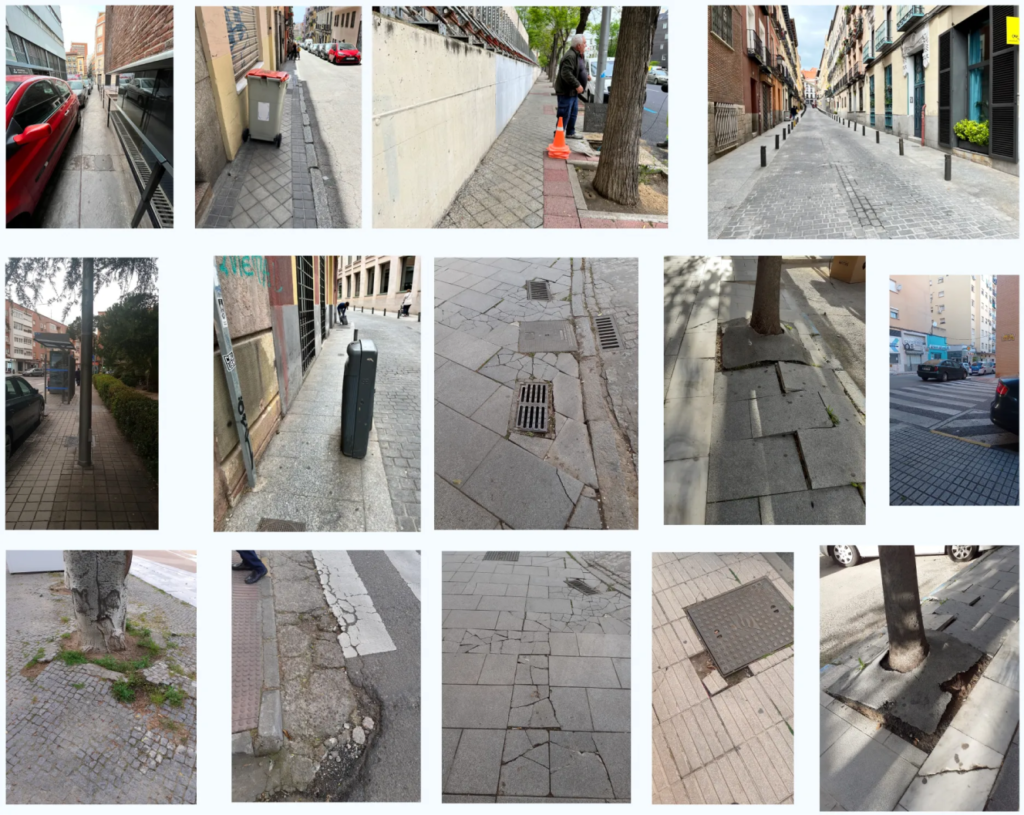
It has been quite helpful because we’ve seen that if we look closely, there are obstacles everywhere of all kinds, whether it’s on a main street, a secondary one, or in one city or another.
User persona, empathy maps, and user journey insights
At this moment, after empathizing with the users, it’s when we felt ready to define our user personas. We created Pilar and Juan, each with their empathy map and journey map. Why them and not others? Based on all the research, we thought that one user persona was insufficient, and even two seemed a bit limited considering all the problems we found. Nevertheless, we were able to encompass them:

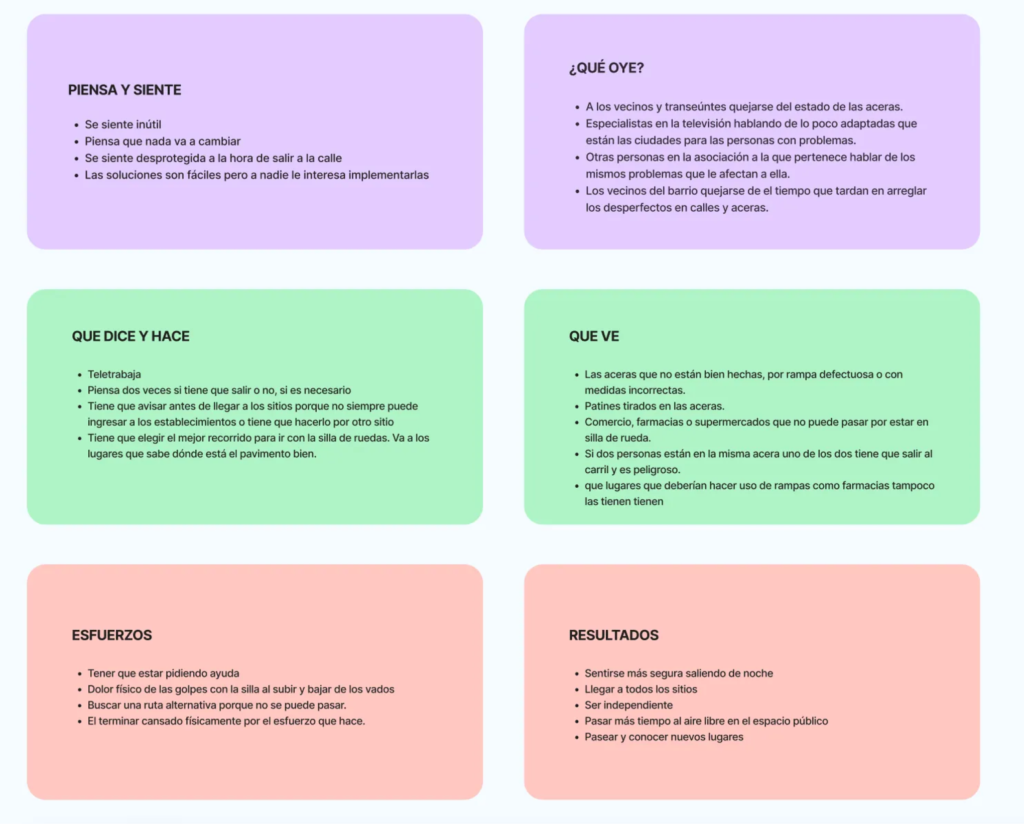
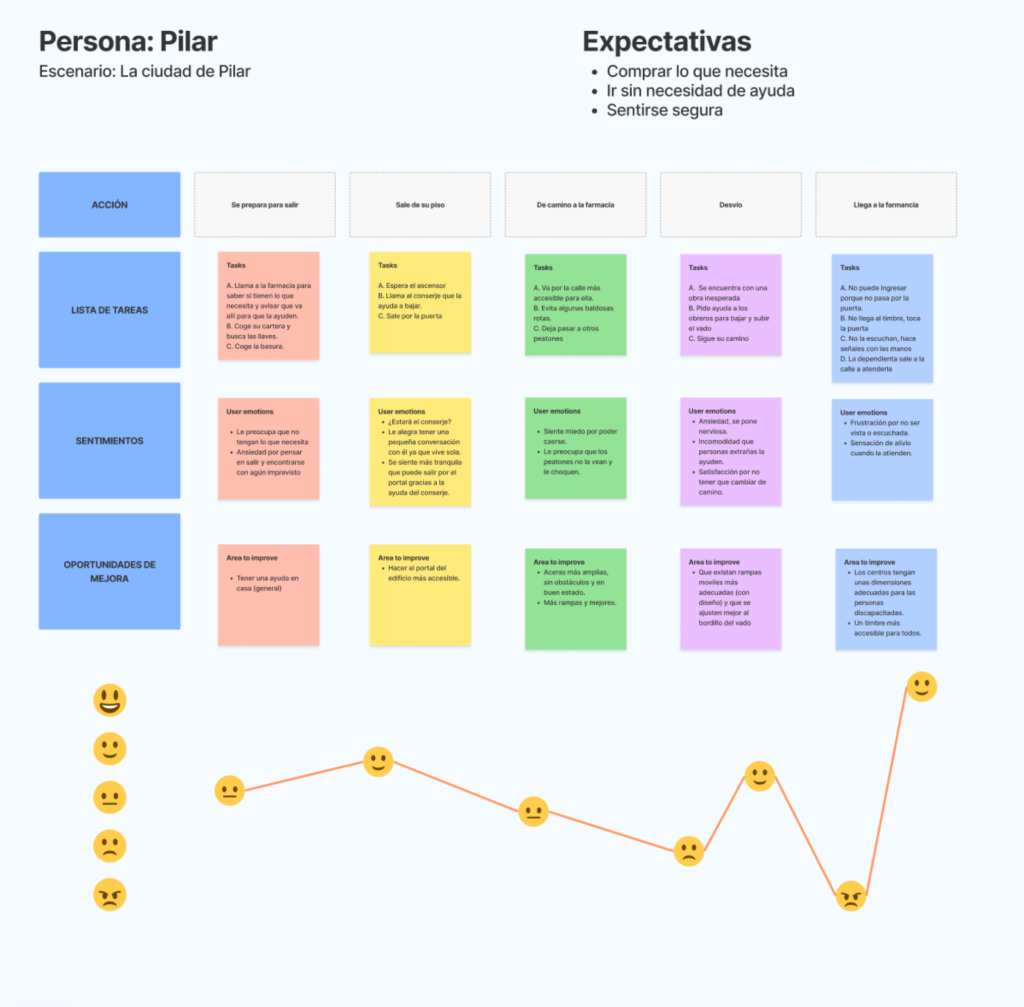
Pilar’s user journey is based on her routine from leaving home to going to the pharmacy. Among her steps, we find that it causes her more discomfort than relief to have to get there.
Now let’s see Juan’s user persona, empathy map & user journey:

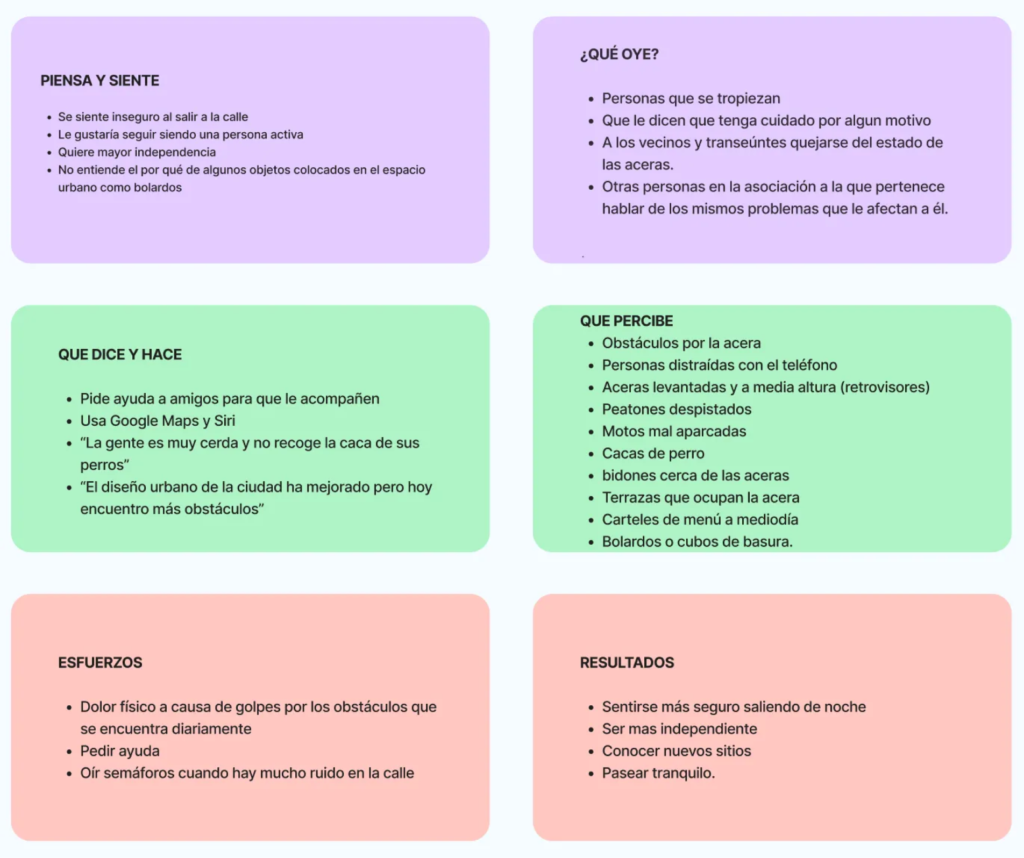
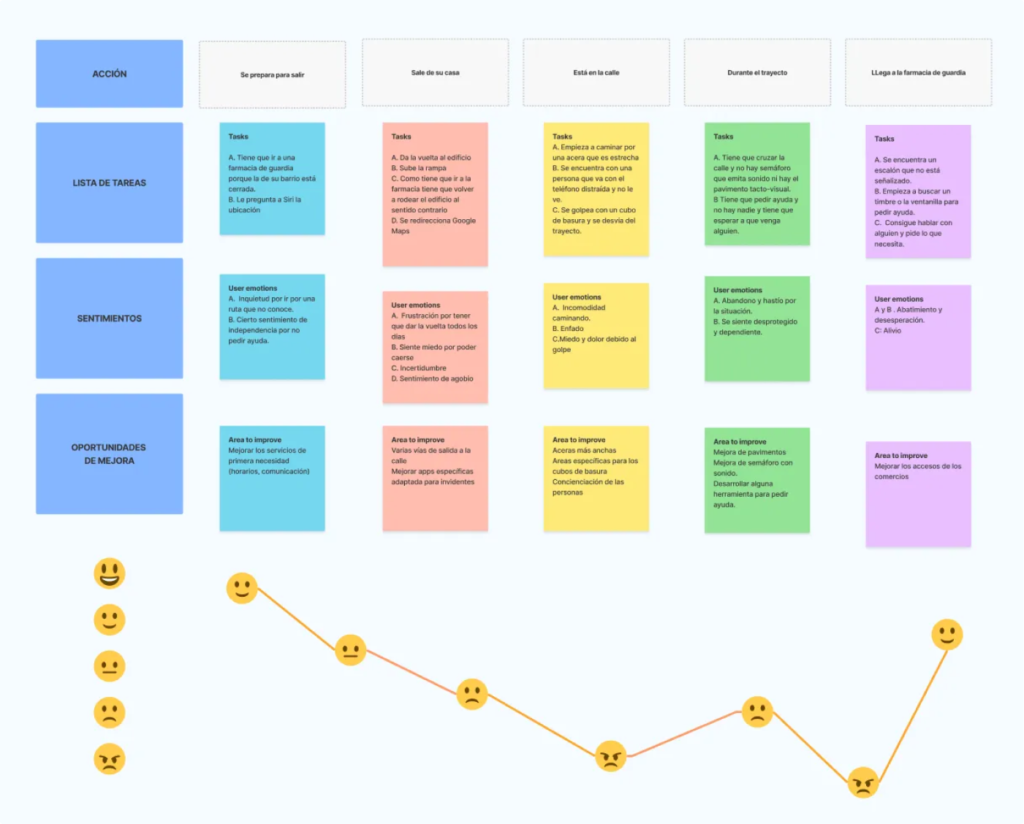
Juan is a blind person who leads an active life because of his sports hobbies. Therefore, he encounters more obstacles than usual, such as people who are on their phones and don’t see him, trash bins in the middle of sidewalks, or excessive noise pollution when trying to cross the street. He detects a lack of awareness in society regarding blind individuals.
Final insights
- There is a clearly poor arrangement of urban elements such as trees, trash bins, street lamps, signs, etc., and a significant number of problems with sidewalks, whether they are narrow, have cracks, raised tiles, and are in poor overall condition.
- Above all, there is a widespread sense of insecurity among users due to all these issues.
- Users with disabilities have a strong negative feeling of being marginalized by society due to society’s lack of awareness.
- Cities in general are often ill-prepared for easy accessibility to various locations.
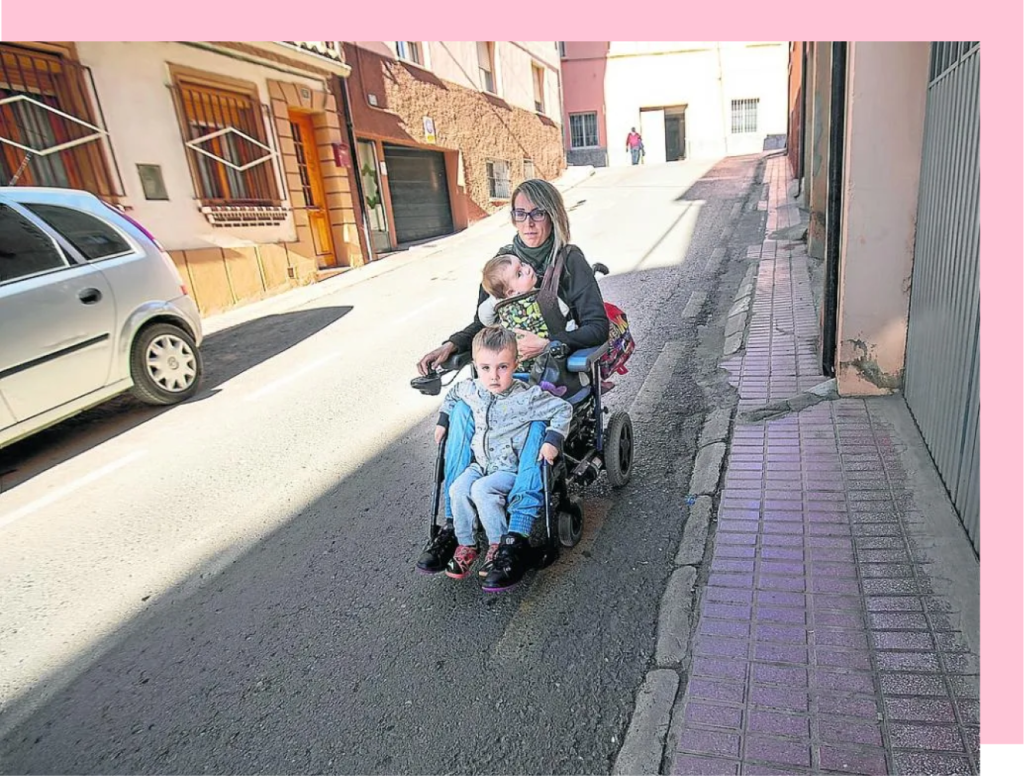
Brainstorming
What have we done for this ideation phase after so much information? Well, yes, a brainstorming session ️. As I mentioned in the first part, with five people having the same information, it’s clear that we’ll have thousands of ideas, so we need to leverage that advantage!
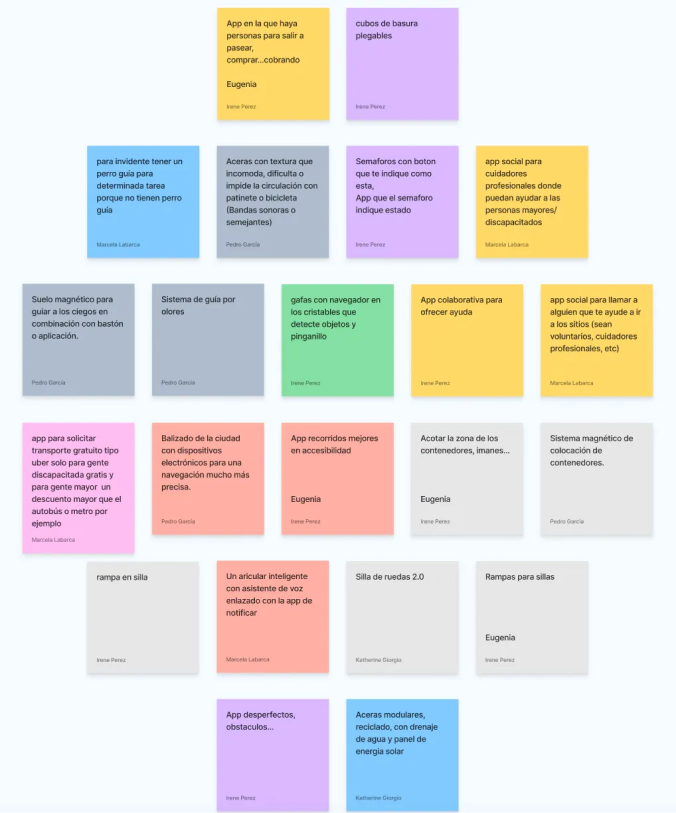
After the brainstorming session, we needed to debate which idea could bring the most benefits to the user, keeping in mind the insights I mentioned in the first part. An idea that works to reduce the insecurity they feel when going out on the street, raise awareness about people with reduced mobility, and help avoid physical obstacles as effectively as possible out there. To do this, we used the ‘in and out’ priority matrix to clear any doubts


Ideation
This is where the ‘Acompáñame’ app was born, allowing our users to find companionship for going out in the simplest way possible. Whether they need companionship due to a mobility impairment or because they’re users who also encounter too many obstacles when going out and want to go out with someone who understands them. Above all, the focus is on the social aspect of helping each other collaboratively rather than any other aspect. Awareness starts with us. With this idea, we wanted to further develop the type of product or service, the target audience, the marketing channels, and the revenue sources to make it happen, a moscow technique in which, with our app as the focal point, we also used the value proposition to analyze the key features we provide to users and what sets our product apart from the competition. (all these details in medium).
And with all of this, we were able to conduct another benchmarking, but this time all together and on the same topic: our social app.
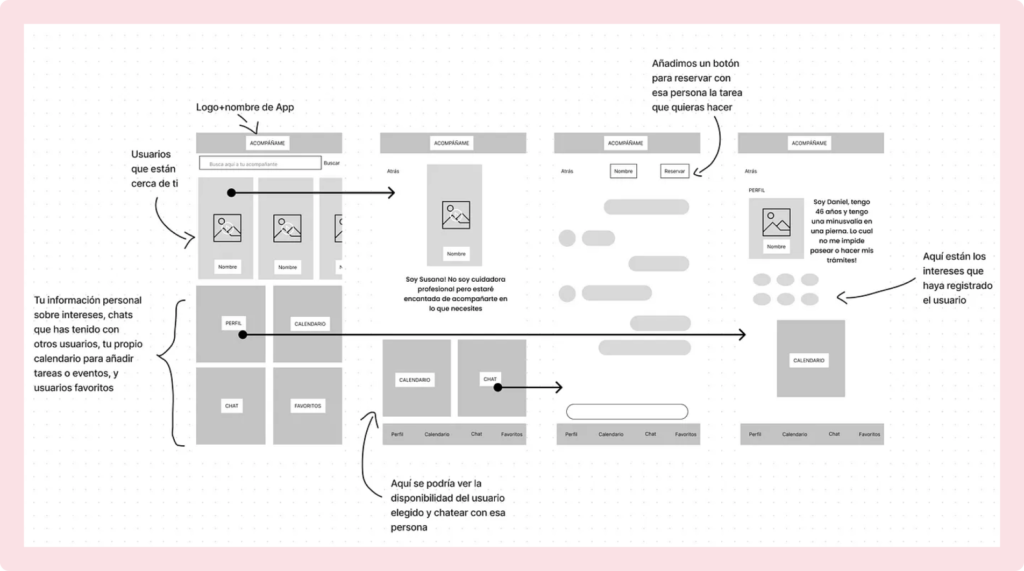
The wireframes for the app looked like this.
Product definition
This app has an onboarding process with three screens that explain its main functionalities, along with a registration button on the last screen for the user. When you press ‘Sign me up!’ the next screen you see would be the one below. Here, you can see key elements like the app name, logo, registration and login buttons, and a help button (‘What is this for?’ ¿Para qué sirve?) in case the user wants to view the onboarding again.


Sections
After logging in, we would finally enter the app. The user will has four main shortcuts: Profile, Calendar, Chats, and Favorites. Each screen flow will be explained later. First the home screen:
Conclusions and future prospects
- One of them is that the help button could also lead to a voice assistant for blind individuals or for those who prefer using audio to navigate the app.
- Another possibility is that the app could initially cater to both volunteers who offer companionship and professional caregivers who want to charge for their services. In other words, it could be both a free and a paid service. Users would have the choice of selecting their companions based on reviews, personal familiarity, professional credentials, or simply a good chat connection.
- Related to the previous possibility, in the case of professional caregivers, they would have a different profile from the standard user we’ve seen in the prototype, as they would be charging for their services. This would involve developing a similar but distinct user flow for professional caregivers.
- It would also be appropriate to introduce a subscription method that offers discounts at certain places like movie theaters, theaters, etc., based on the subscription level users have.
This Design Thinking project allowed us to explore numerous ideas through extensive research and converge on the analysis of the ultimate idea that we consider most useful for users. I found the issue very interesting because it affects us all in different ways, and working with five people with different perspectives was a valuable experience.